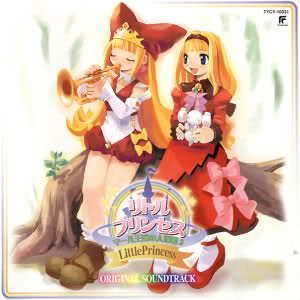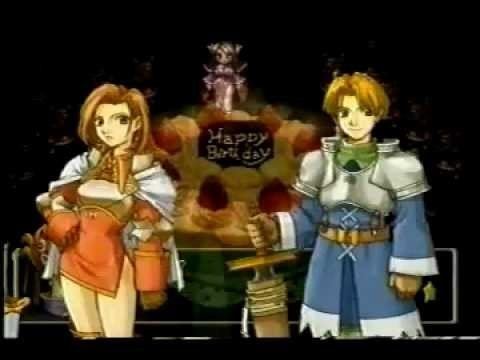8.4 /10 1 Votes
Initial release date 25 November 1999 | 4.2/5 Emuparadise Mode(s) Single player Genre Role-playing video game | |||||||||||||||||||||||||||||||||
Developers Nippon Ichi Software, NIS America Similar Nippon Ichi Software games, Role-playing video games | ||||||||||||||||||||||||||||||||||
Little princess maru oukoku no ningyou hime 2 blind episode 3
Little Princess: Marl Ōkoku no Ningyō Hime 2 (リトルプリンセス マール王国の人形姫2, Ritoru Purinsesu Māru Ōkoku no Ningyō Hime Tsū) is a Japan-only role-playing video game from the Marl Kingdom series. The game was released three times — once in 1999, once as Little Princess+1: Marl Ōkoku no Ningyō Hime 2 in 2000, and then in the PSone Books series in 2001.
Contents
- Little princess maru oukoku no ningyou hime 2 blind episode 3
- Marl kingdom tribute innocence
- Plot
- Characters
- Gameplay
- Battle
- Legacy
- PlayStation Store
- Soundtrack
- Reception
- References

Little Princess takes place twelve years after the epilogue of Rhapsody: A Musical Adventure, and features several of the same characters. The tactical role-playing game battle system of Rhapsody was discarded for a more traditional RPG battle system. Like its predecessor, Little Princess includes many musical interludes and focuses on the themes of falling in love and fulfilling your dreams.

The game is currently available for download via the PlayStation Store, and is playable on either the PSP or PlayStation 3. The download became available on May 31, 2007, only in Japan.

Marl kingdom tribute innocence
Plot

Little Princess starts off many years after where Rhapsody: A Musical Adventure left off. Cornet, having saved Prince Ferdinand in Rhapsody, is now the ruler of Marl Kingdom. They have one daughter, Kururu, named after Cornet's fairy puppet friend/mother. Now twelve years old, Kururu, joined by her best friend Crea Rosenqueen, wants to go on a journey to find her own knight in shining armor.
While taking a walk through the forest, Kururu and Crea are attacked by a dragon and saved by a mysterious boy named Cello, much like how Cornet and Ferdinand met years before. Kururu does not immediately fall in love with Cello (mostly because he calls her "Pumpkin Pants," after her taste in clothing), and initially hates him. Over the course of her quest he repeatedly appears out of nowhere to help her.

Elsewhere, a battle is brewing between the two families of witches—the Marjoly Family (the villains of the first game) and the Akurjo Family. The Akurjo Family is attempting to steal the Shadow of Beauty, a wish-granting gemstone that Marjoly has always treasured (as it is a memento of her first love, Keeldear). To keep the Akurjo Family from taking the jewel, Marjoly breaks it into pieces and scatters the shards across the country. Both of the witch families then begin searching for the shards, each trying to complete the gem first. Kururu, Crea, and Cello are soon involved with the search as well, as Cello needs the Shadow of Beauty to heal his mother's illness. As they work together, Kururu realizes that she is falling in love with Cello.
Once the pieces have all been collected, Kururu gathers the courage to confess her feelings to Cello. The moment she does, it is revealed that Cello's mother is Akurjo, who subsequently teleports away with him.
Kururu, determined not to give up on Cello, battles her way through Akurjo's castle to find Cello. Upon meeting him again, Cello tries to fight Kururu, but finally admits that he loves Kururu as well. He then collapses. Marjoly uses her magic to let Kururu enter Cello's heart to heal him. In this way, Kururu gets to experience his tragic past firsthand.
After the final battle with Akurjo, everyone (including the Marjoly Family) wishes together on the Shadow of Beauty for Akurjo to be healed of her illness. This succeeds, but Akurjo retreats into the Netherworld, saying she needs to cool her head (though Marjoly points out that Akurjo wants to say "thank you", and is just too stubborn to do so). Cello decides to go to the Netherworld to look after his mother, but promises Kururu that he will someday return to her.
Four years later, Kururu and Crea take a walk in the forest (just as they did at the beginning of the game), and again, Cello appears to save them from a dragon.
The game ends there, and its story continues in the second chapter of Tenshi no Present.
Characters
Gameplay
Like Rhapsody, Little Princess is an RPG. Characters join the party, level up, equip things, etc. The player controls Kururu around different areas. There are multiple difficulties, but the game over all is viewed as more challenging than Rhapsody.
Battle
The battle system has changed drastically from Rhapsody's tactics style fights. Little Princess features a more traditional RPG, turn-based battle system, with the enemy characters on the left-hand side of the screen and the player characters on the right. Unlike the battle system in Rhapsody (in which one controlled the game's main character and three puppets or monsters), only human characters fight. Puppets are equipped to specific characters, and are used to cast magic; instead of MP (magic points), money is taken with each spell in small amounts. Furthermore, a character's equipped puppets receive experience in battle and level up at roughly the same rate as the player, regardless of whether they are actually used in battle. Each time the player uses a puppet, a note is added to the musical staff on the battle screen; when a full bar is completed, the number to the right of the staff increases by one and the notes are cleared, allowing the player to fill up more bars with notes. When enough bars have been completed, the player can use a variety of attacks known as "Rewards" (ごほうび, gohōbi), which subtract varying amounts of completed bars from the player's total. A predecessor of the Reward system was present in the previous game; however, in Little Princess, one receives notes after using puppet magic (rather than after playing the trumpet to boost the puppets' statistics), since the central character of Little Princess cannot play her trumpet in battle. As only two of the game's characters are able to equip and use puppets, most human characters have special skills or techniques equivalent to magic, and one character is able to use monsters (which can be captured after battle, as in Rhapsody) in much the same way as puppets.
Legacy
Along with Rhapsody: A Musical Adventure and Tenshi no Present: Marl Ōkoku Monogatari, this game is part of the Marl Kingdom series, a Nippon Ichi series. Little Princess maintains the emphasis on musical numbers and themes of love introduced in Rhapsody, as well as the anime inspired, bright graphics, which are used in several later Nippon Ichi games. Unlike Rhapsody, Little Princess was never released outside Japan, possibly due to Rhapsody's low level of mainstream popularity.
Currently there is an active forum on NIS America requesting Marl Ōkoku no Ningyō Hime 2 and Tenshi no Present - Marl Oukoku Monogatari on the NIS request forum. It is believed that with enough support the games will be licensed, but NIS Americas response to this is currently unknown.
A version of the game was released on mobile phones.
PlayStation Store
The game was made available for download via the PlayStation Store on May 31, 2007. However, the download was only available in Japan, and there is no word of bringing it to North America.
Soundtrack
A soundtrack for the game's music was released on March 8, 2000. The music, like in the other Marl games, was handled by Tenpei Sato.
Track list:
- Little Princess ~ Main Theme
- Princess Kururu
- Marl's Lane
- Wonderful World
- Daydream
- A Tomboy Princess
- Starting Over
- Because We Are Always Together
- Winged Boy
- The Way of Making Good Soft Cream
- Mothergreen
- Let's Go Walking ~ Etoile's Love
- It's...the Front of the Back?
- A Customer's Here!
- Kururu's Memories
- Evil Queen
- Puppet Crisis
- The Karkanskys and the Baknekoffs
- Rosen Queenland
- The Little Princess' Decision ~ Sending My Thoughts into Eternity
- Hysteric Ceremony
- We are the Witch-Tribe
- Eyes of the Princess
- First Love
- Uru-uru Kururu
- Under the Rule of the Soldier
- Sky-Palace of the Witches
- The Law of the Noble Flower
- Last Dance
- The Little Princess' Decision ~ So That Thoughts May Be Handed Down Through Generations
Reception
On release, Famitsu magazine scored the game a 30 out of 40.
